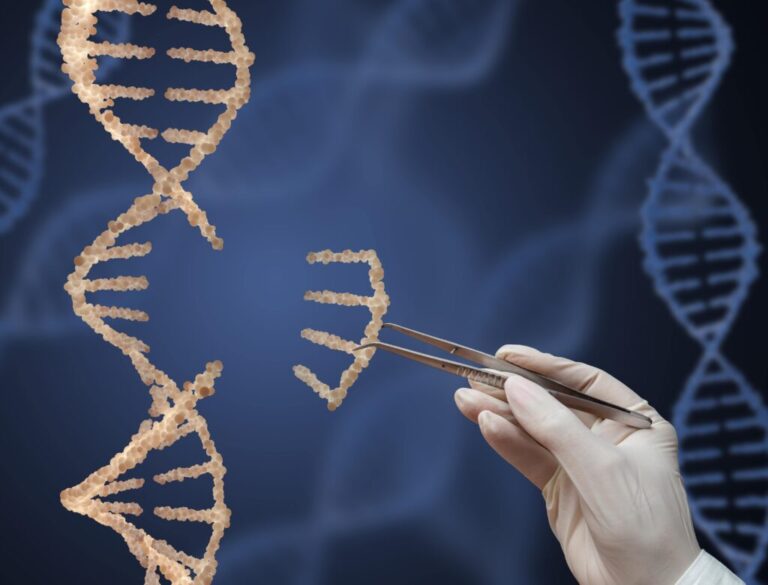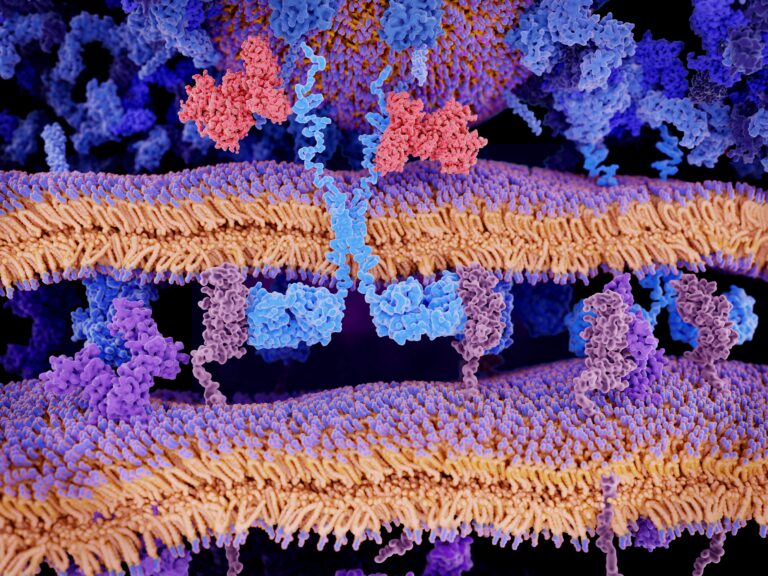
Types of Gene Therapy
Broadly speaking, the term “gene therapy” refers to techniques that seek to treat or prevent disease by modifying, manipulating, or altering the genetic material of

Broadly speaking, the term “gene therapy” refers to techniques that seek to treat or prevent disease by modifying, manipulating, or altering the genetic material of

The promise and potential of gene therapy have gone through several iterations since the 1960s, when scientists first hypothesized that introducing DNA sequences into their

Some viruses and bacteria use a syringe-like system to infect host cells. Scientists have found a way to repurpose this system to deliver therapeutic proteins

Researchers have found a rare genetic mutation that provided protection against early-onset dementia in a man that was otherwise at high risk. Furthermore, although the

Wilson disease is a rare genetic disease marked by the gradual accumulation of excess copper in the body, primarily in the liver, brain, eyes, and

A man in Germany has been cleared of human immunodeficiency virus (HIV), according to researchers, after receiving a stem cell transplant from an HIV-resistant donor.

Recent years have seen increased research interest in the potential of chimeric antigen receptor (CAR)-T cancer therapies. This approach uses genetic engineering to modify T

Funding unlocked during the COVID-19 pandemic allowed many countries in Asia and Africa to perform in-house genome sequencing, resulting in faster results and action that

Investors are pouring hundreds of millions of dollars into research designed to minimize the harms of aging through genetic engineering. The San Diego-based biotech, Rejuvenate

The events of the COVID-19 pandemic have largely upended how we perceive and respond to global viral threats. One positive change is the technology that

Although antisense therapy — using antisense oligonucleotides (ASOs) to control protein function — has generated controversy and skepticism over the years, it is now considered

If you compare a pack of fearsome ancient wolves with a pack of modern-day chihuahuas, it’s clear that domesticated dogs have evolved almost beyond recognition.

Broadly speaking, the term “gene therapy” refers to techniques that seek to treat or prevent disease by modifying, manipulating, or altering the genetic material of

The promise and potential of gene therapy have gone through several iterations since the 1960s, when scientists first hypothesized that introducing DNA sequences into their

Some viruses and bacteria use a syringe-like system to infect host cells. Scientists have found a way to repurpose this system to deliver therapeutic proteins

Researchers have found a rare genetic mutation that provided protection against early-onset dementia in a man that was otherwise at high risk. Furthermore, although the

Wilson disease is a rare genetic disease marked by the gradual accumulation of excess copper in the body, primarily in the liver, brain, eyes, and

A man in Germany has been cleared of human immunodeficiency virus (HIV), according to researchers, after receiving a stem cell transplant from an HIV-resistant donor.

Recent years have seen increased research interest in the potential of chimeric antigen receptor (CAR)-T cancer therapies. This approach uses genetic engineering to modify T

Funding unlocked during the COVID-19 pandemic allowed many countries in Asia and Africa to perform in-house genome sequencing, resulting in faster results and action that

Investors are pouring hundreds of millions of dollars into research designed to minimize the harms of aging through genetic engineering. The San Diego-based biotech, Rejuvenate

The events of the COVID-19 pandemic have largely upended how we perceive and respond to global viral threats. One positive change is the technology that

Although antisense therapy — using antisense oligonucleotides (ASOs) to control protein function — has generated controversy and skepticism over the years, it is now considered

If you compare a pack of fearsome ancient wolves with a pack of modern-day chihuahuas, it’s clear that domesticated dogs have evolved almost beyond recognition.
Delaware Technology Park,
3 Innovation Way,
Newark, DE 19711
"*" indicates required fields

Emails are serviced by Constant Contact. You can revoke your consent to receive emails at any time by using the SafeUnsubscribe® link, found at the bottom of every email.